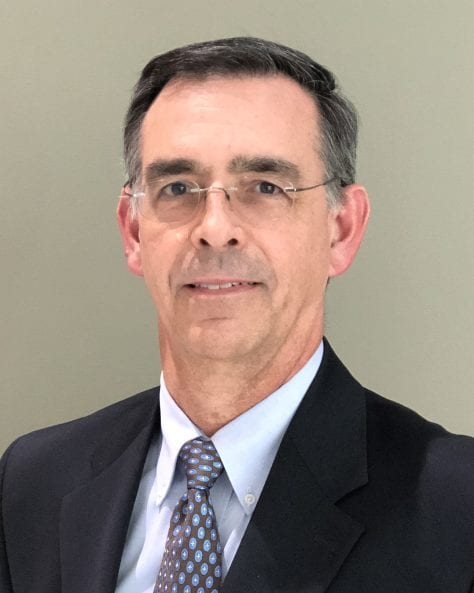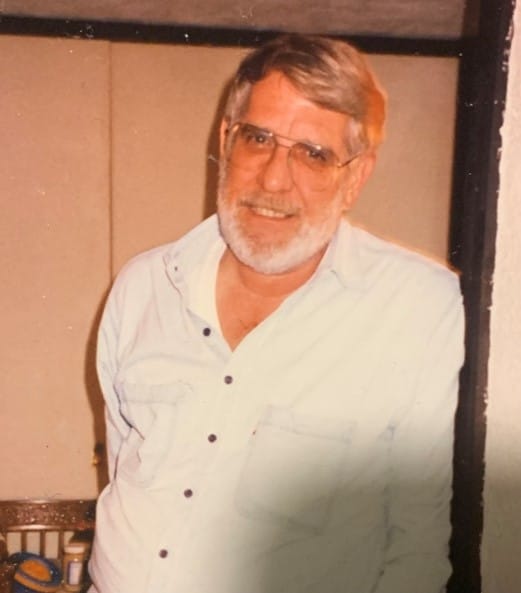eNews: Volume 21, Number 12 (April 2024)
Volume 21, Number 12 (April 2024)
From the Director’s Desk
John Howard, M.D., Director, NIOSH
Over 10,000 Firefighters Registered and Counting!
It’s been one year since NIOSH launched the National Firefighter Registry (NFR) for Cancer. The NFR for Cancer is a voluntary registry of U.S. firefighters. With support from fire service leaders, NIOSH created the NFR to better understand and reduce cancer among firefighters. Research has shown that firefighting can increase the risk of certain types of cancer, but many knowledge gaps remain. For example, studies have not included enough diverse groups of firefighters to understand their cancer risk. These include women and nonwhite firefighters, as well as volunteer, wildland, or other types of fire service.
Over the past year, the NFR for Cancer team has engaged in an outreach campaign to encourage firefighters to join. A few activities include
- Creating over 30 different communication products, including videos, fact sheets, posters, and more.
- Releasing multiple toolkits to help fire service leaders and organizations encourage firefighters to join the registry. Find a toolkit for organizations, fire chiefs, and to promote Firefighter Cancer Awareness Month.
- Using multiple channels, including social media, media interviews, trade publications, and more, to share information about the registry.
- Meeting with firefighters at fire service conferences and meetings to help spread the word.
These outreach activities have been successful. In just a year, over 10,000 firefighters have joined the NFR for Cancer! This is a great start to developing the large, diverse cohort needed to help answer questions about firefighting and cancer. However, we need more firefighters to sign up.
If you’ve ever served as a U.S. firefighter, you can be part of the next 10,000 firefighters to join this historic effort. When you sign up, the information you share will help researchers study why some firefighters develop cancer while some do not. This research may help reveal what we can do to reduce cancer in the fire service. The more firefighters who join the program, the more questions we can answer about the link between firefighting and cancer.
More than 1 million active career and volunteer firefighters serve across the United States today. Protecting their health and safety is a top priority for NIOSH. As we move into its second year, NIOSH is committed to increasing firefighter participation in this vital program. Keep updated on its activities by signing up for the NFR for Cancer quarterly newsletter.
Risky Driving Behaviors and Employer Motor Vehicle Safety Policies Among U.S. Oil and Gas Extraction Workers
NIOSH study authors: Kaitlin C. Wingate, Stephanie Pratt, Alejandra Ramirez-Cardenas, and Kyla Hagan-Haynes
Why is this study important?
More than half of all work-related deaths among U.S. oil and gas extraction workers are due to transportation incidents. Most of these incidents involve motor vehicle crashes. We know that risky driving behaviors increase the likelihood of crashes among these workers. What is unclear is how employees’ awareness of employer motor vehicle policies are related to the frequency of risky driving behaviors among these workers.
How did you do the study?
Between October 2017 and February 2019, we surveyed 500 oil and gas extraction workers from 13 different companies in Colorado, Texas, and North Dakota. We analyzed 363 surveys completed by those workers who drive for work. We characterized risky driving behaviors, which included self-reported speeding, cell phone use while driving, and driving without a seat belt. We then compared the relationship between those behaviors with the workers’ awareness of their own company’s policies for motor vehicle safety.
What did you find?
Risky driving behaviors were more common among workers with longer work hours, longer daily commutes, and for those who work at companies without motor vehicle safety policies. The most common risky driving behavior reported was hands-free cell phone use. Speeding as well as talking on a handheld cell phone were also common. Nearly 60% of workers surveyed reported using a hands-free cell phone while driving. At the same time, a workplace ban on hands-free cell phone use was the least commonly reported policy for motor vehicle safety. Only 35% of workers reported that they were aware that their company had this policy.
What are the next steps?
Our results highlight the importance of employer interventions to prevent motor vehicle crashes. Promising interventions identified in the safety literature include banning all cell phone use while driving, monitoring and addressing drivers’ speeding, and using in-vehicle monitoring systems. More research is needed to evaluate the effectiveness of these interventions among oil and gas extraction workers.
The Association Between Safety Climate and Noncombat Injury Events Among United States Air Force Workers
Study authors: Christina M. Socias-Morales, NIOSH; Emily J. Haas, NIOSH; Melody Gwilliam, NIOSH; Patrick L. Yorio, CDC; Nancy B. Delaney, US Air Force Safety Center (AFSEC); Rachael G. Falcon, AFSEC; Heidi A. Stallings, AFSEC; Bruce R. Burnham, AFSEC; David M. Stuever, AFSEC; Stephen M. Stouder, AFSEC; Geoffrey L. Ewing, AFSEC; James W. Collins, NIOSH; and Cammie K. Chaumont Menendez, NIOSH
Why is this study important?
Work-related injuries are a persistent risk in many industries. In the U.S. Department of the Air Force, injuries are more likely to occur outside of combat than during combat. Noncombat injuries result in time away from work and limit military readiness. Previous research has shown that the workplace safety climate, or the perception of safety among workers and employers, can help prevent injuries. In this study, we wanted to understand how safety climate affects the number of injuries reported by these workers.
How did you do the study?
We compared the number of injuries with the results of anonymous, voluntary surveys from 1,547 squadrons, generally the smallest level of command, collected from 2014 to 2018. Survey respondents included maintenance, support, and operations workers. We assessed safety climate based on five categories: Leadership and Communication, Organizational Safety Priority, Error Management, Resource Adequacy, and Deployment/Official Travel Impact.
What did you find?
For each squadron included over the 5-year study, an average of 144 workers reported nearly 16 injuries. At the squadron level, higher (more favorable) scores were consistently and significantly correlated with fewer noncombat injuries. With each one-point increase in safety climate, injuries were less likely to be reported in four of the five categories. One category, Resource Adequacy, had little effect on the likelihood of reported injuries.
What are the next steps?
In future studies it is important to look at whether injuries change over time after leaders review and take action on the results of safety climate surveys.

Director’s Desk
Research Rounds
- Risky Driving Behaviors and Employer Motor Vehicle Safety Policies Among U.S. Oil and Gas Extraction Workers
- The Association Between Safety Climate and Noncombat Injury Events Among United States Air Force Workers
Highlights
- Save the Date for the National Stand-Down to Prevent Struck-by Incidents!
- Prepare for the Summer Heat
- NIOSH’s Impact Wellbeing™ Campaign Releases Guide to Improve Healthcare Worker Burnout
- Improving the Safety and Health of Workers Who Use PPE
- NIOSH Board of Scientific Counselors Seeks Nominations for New Members
- NIOSH Announces New Division Director
- NIOSH Announces Phase 2 Winners of the Respirator Fit Evaluation Challenge
- In Memoriam: Dr. Richard “Rick” W. Niemeier
Monthly Features
John Howard, M.D., Director
Christina Spring, Editor in Chief
Managing Editor
Tanya Headley
Section Editor
Anne Blank, Research Rounds
Kiana Harper, Highlights & Monthly Features
Contributing Editors
Sarah Mitchell
Copy Editor
Cheryl Hamilton
Technical Support
Steve Leonard, Technical Lead
Matt Osborne, Web Developer
To receive the NIOSH eNews email newsletter, enter your email address:
Save the Date for the National Stand-Down to Prevent Struck-by Incidents!
The 5th Annual National Stand-Down to Prevent Struck-by Incidents coincides with National Work Zone Awareness Week, April 15–19. NIOSH planned the event with the NORA Construction Sector Council, the Center for Construction Research and Training, the American Road & Transportation Builders Association, and others. The kickoff for the 2024 Stand-Down will be April 15 in Mobile, Alabama. To learn more, visit the Stand-Down webpage.
Prepare for the Summer Heat
Join NIOSH, April 29–May 3, for a social media campaign to raise awareness on preparing for the upcoming warm season. During the event, the National Integrated Heat Health Information System and other partners will be sharing resources and heat-related information. They aim to help people protect themselves and others before, during, and after heat events. Follow NIOSH on Facebook, X/Twitter, Instagram, and LinkedIn.
NIOSH’s Impact Wellbeing™ Campaign Releases Guide to Improve Healthcare Worker Burnout
NIOSH has released an evidence-based, actionable guide for hospital leaders to improve healthcare worker wellbeing. The guide, part of the first federal campaign to address healthcare worker burnout, is titled Impact Wellbeing™ Guide: Taking Action to Improve Healthcare Worker Wellbeing. The publication serves as the newest addition to the Impact Wellbeing™ Campaign, launched in October 2023. Read the press release to learn more.
Improving the Safety and Health of Workers Who Use PPE
NIOSH released a document highlighting the proceedings of the NIOSH 2022 Equitable Personal Protective Equipment (PPE) Protections Workshop. This information advances the knowledge needed to improve the safety and health of workers using protective equipment. Read the proceedings or watch videos of the workshop: Day 1: Session 1 and Session 2; Day 2: Sessions 1 & 2.
NIOSH Board of Scientific Counselors Seeks Nominations for New Members
The NIOSH Board of Scientific Counselors is seeking nominations for new members to serve starting in 2025. The Board meets twice a year to provide advice to the NIOSH Director on NIOSH’s occupational safety and health research and prevention programs. See the full announcement for more information. Send nominations to nioshdocket@cdc.gov by April 17.

Photo by: NIOSH
NIOSH Announces New Division Director
Ray Wells, PhD, has been appointed Director of the NIOSH Health Effects Laboratory Division. Dr. Wells received a Bachelor of Science degree in Chemistry from the Georgia Institute of Technology in 1987. From Northwestern University, he earned a Master of Science degree in Inorganic-Physical Chemistry in 1988 and a Doctorate in Chemistry in 1992. Dr. Wells joined NIOSH in 1999. He is a research chemist and has authored numerous peer-reviewed publications.
NIOSH Announces Phase 2 Winners of the Respirator Fit Evaluation Challenge
NIOSH has selected nine winners for the second phase of the Respirator Fit Evaluation Challenge. The Challenge is a three-phase, $350,000 competition aimed at improving respirator fit evaluation. It seeks practical solutions that deliver real-time information on filtering facepiece respirator fit. Read the full NIOSH Update to learn more about the winners.

Photo courtesy of the Niemeier family
In Memoriam: Dr. Richard “Rick” W. Niemeier
With profound sadness, we announce the death of retired NIOSH employee Dr. Richard “Rick” W. Niemeier. Rick worked for NIOSH for 36 years, from 1976 to 2012. He joined NIOSH as an inhalation toxicologist at the NIOSH Cincinnati laboratory. Over his NIOSH career, Rick served in multiple senior division leadership positions. He was responsible for the development of several occupational safety and health standards. In 1988, he led NIOSH through its effort to update the Recommended Exposure Limits in support of the Occupational Safety and Health Administration. Rick was an expert on chemical and biological terrorism, served on national and international committees, and bettered the lives of workers around the world. He collaborated on countless NIOSH publications and peer-reviewed publications and received multiple distinguished awards for his work and service. He was just as passionate about his hobbies as he was his work. He was an excellent guitar player, woodworker, and outdoorsman. Rick was a wonderful, loving husband, father, and grandpa. He inspired everyone to work hard, pursue their aspirations, and use their talents, skills, and knowledge to help others.
Meetings and Events
The Role of Technology in the Future of Work
Join NIOSH on April 18, 11:00 a.m.–12:00 p.m. (ET), for the ninth installment of the Future of Work webinar series. The webinar will cover the priority topic area of Emerging Technologies. This broad field covers digital and physical spaces and may bridge the gap between them. Register now to learn more!
View more occupational safety and health-related conferences, meetings, webinars, and events hosted by NIOSH and partners.
Communication Products
FACE Reports
- Farm Services Driver Killed in Highway Crash—Kentucky
- Teen Truck Driver Dies in Single Vehicle Semi-Truck Rollover—Kentucky
Guide
Proceedings
Science Blog
Sign up to receive updates about new NIOSH Science Blogs delivered directly to your inbox! Here are the blogs from last month:
NORA
Upcoming NORA Meetings
- Hearing Loss Prevention NORA Council Meeting: Join the Hearing Loss Prevention NORA council for their meeting, April 8, 11:30 a.m.–1:00 p.m. (ET). Please contact Elizabeth Masterson for the meeting invite.
- Immune, Infectious, and Dermal Diseases NORA Council Meeting and PFAS Webinar: Join the Immune, Infectious, and Dermal Diseases NORA Council for a webinar on per- and polyfluoroalkyl substances (PFAS). The webinar will be April 12, 1:00–2:30 p.m. (ET). Please contact Seth McCormick for the meeting invite.
- Healthy Work Design and Wellbeing NORA Council Meeting: Join the Healthy Work Design & Wellbeing NORA Council for their meeting, April 25, 3:00–4:30 p.m. (ET). Please contact Naomi Swanson for the meeting invite.
- Healthcare and Social Assistance NORA Council Meeting: Join the Healthcare and Social Assistance NORA Council for their meeting, May 1, 3:00–4:30 p.m. (ET). Please contact Suzanne Tomasi for the meeting invite.
News from Our Partners
CDC Foundation Releases “How Right Now” Campaign for School Staff and Teachers
The How Right Now campaign was developed in 2020 to provide mental health and emotional support during the pandemic. Their current focus is on understanding and supporting the needs of public-school K-12 teachers and school staff. The goal is to increase the coping skills of teachers and staff and enhance their ability to adapt and be more resilient.
Webinars in Emerging Technologies in Occupational Safety and Health
This spring, the National Institute of Environmental Health Sciences (NIEHS) Superfund Research Program (SRP) is hosting their 2024 Progress in Research webinar series. This year, the series will showcase NIEHS SRP funded researchers focused on emergent technologies in occupational health and safety. The webinars will be held April 26 and May 3 from 1–3 p.m., and May 17 from 12–2 p.m. Learn more and register today!
Third Annual National Integrated Heat Health Information System National Meeting
Registration is now open for the 3rd Annual National Integrated Heat Health Information System National Meeting! The virtual event will be April 16–18, 12–4 p.m. (ET) daily. This national meeting aims to bring together multiple agencies and community leaders to discuss heat and health. The event is focused on engaging communities and developing a shared vision for community heat resilience.
Upcoming Federal Advisory Council on Occupational Safety and Health Meeting
A Federal Advisory Council on Occupational Safety and Health meeting will be April 18, 1–4 p.m. (ET), via WebEx. Read the notice and submit comments or a request to speak by April 5.
Updates From State Fatality Assessment and Control Evaluation (FACE) Programs:
- Construction Laborer Dies From 16-Foot Fall: The Fatality Summary from the Michigan FACE program is about a construction laborer killed when the elevated job-built debris container he entered fell 16 feet to the ground. To help prevent similar incidents, the summary provides prevention recommendations and legal requirements.
- Steel Worker Crushed Operating Extendable Boom Forklift: The Fatality Summary from the Michigan FACE program is about a steel worker crushed while operating an extendable boom forklift. To help prevent similar incidents, the summary provides prevention recommendations and legal requirements.
- Racetrack Flagman Struck by Race Car: The Fatal Summary from the Michigan FACE program is about a racetrack flagman struck by a race car. To help prevent similar incidents, the summary provides prevention recommendations and legal requirements.
- Preventing Farm Worker ATV Crash Deaths: This Hazard Alert from the Washington FACE program provides fatal and serious injury data involving all-terrain vehicles (ATVs). The report includes case studies and recommendations to prevent ATV crashes for farm workers.
- Heavy Equipment Mechanic Dies Repairing Excavator: This Fatality Narrative from the Washington FACE program is about a heavy equipment mechanic who died while repairing a large excavator. To help prevent similar incidents, the narrative provides prevention recommendations and legal requirements. The report can also be viewed as a slideshow.
- Sawmill Loader Operator Crushed Performing Maintenance on Front-end Loader: This Fatality Summary from the Michigan FACE program is about a sawmill loader operator crushed while performing maintenance on a front-end loader. To help prevent similar incidents, the summary provides prevention recommendations and legal requirements.
Federal Register Notice
Meeting of the Mine Safety and Health Research Advisory Committee
The notice was posted on March 4. The meeting will be held on April 17.
Meeting of the Advisory Board on Radiation and Worker Health, National Institute for Occupational Safety and Health
The notice was posted on March 4. The meeting will be held on April 17.
Solicitation for Nominations for Appointment to the Board of Scientific Counselors, National Institute for Occupational Safety and Health
The notice was posted on March 18. Comments must be received by April 17.
Proposed Data Collection Submitted for Public Comment and Recommendations: Generic Clearance for the Collection of Qualitative Feedback on Agency Service Delivery
The notice was posted on March 14. Comments must be received by May 13.
National Institute for Occupational Safety and Health; Outdoor Workers Exposed to Wildland Fire Smoke; Request for Information
The notice was posted on March 14. Comments must be received by May 13.
Approval Tests and Standards for Combination Unit Respirators
The notice was posted on March 15. Comments must be received by May 14.
Proposed Data Collection Submitted for Public Comment and Recommendations: The National Firefighter Registry (NFR) for Cancer
The notice was posted on March 22. Comments must be received by May 21.
